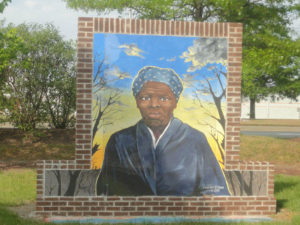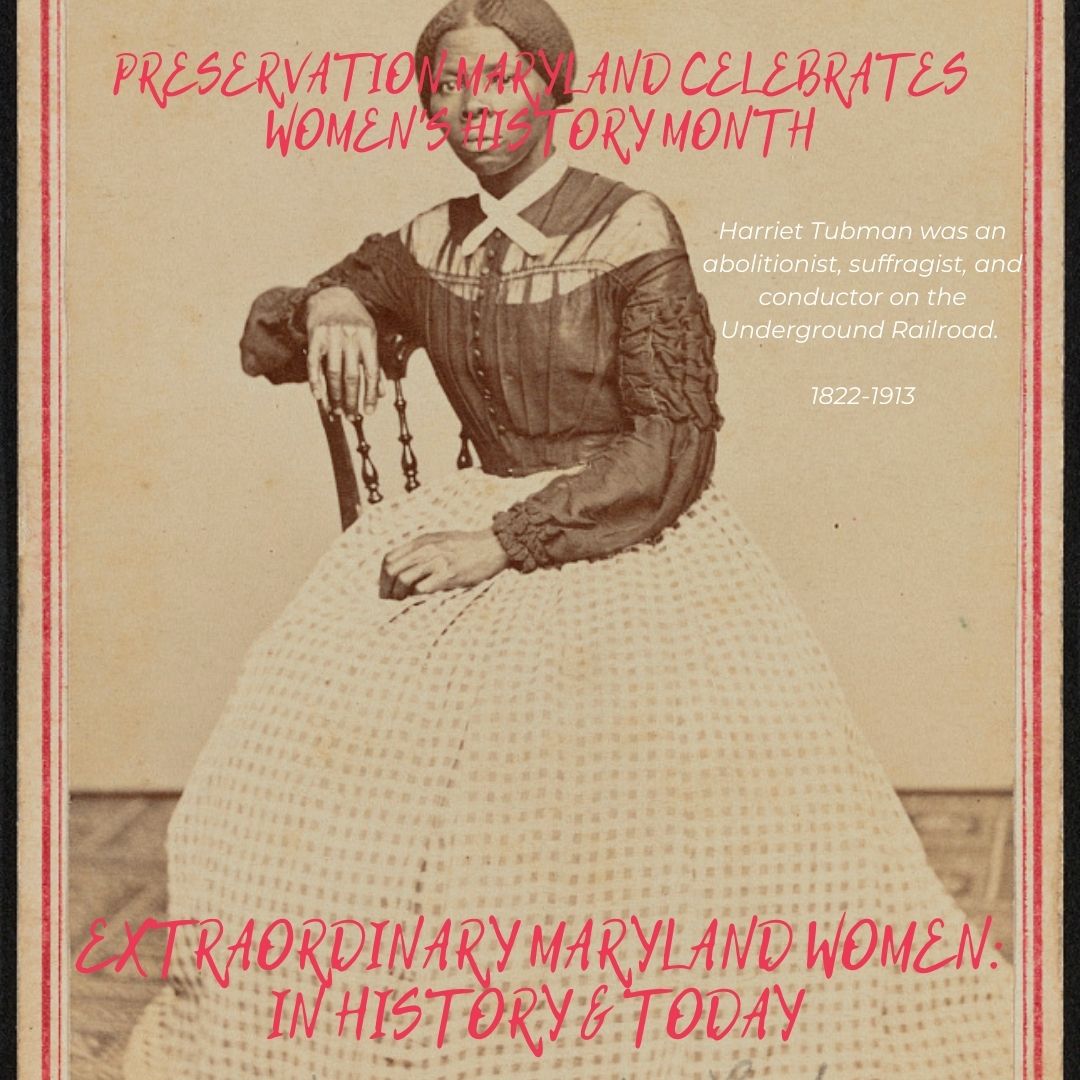Today, on Harriet Tubman Day, we honor the woman who played an influential role in the history of the United States. An escaped enslaved person, abolitionist, suffragist, conductor on the Underground Railroad, and nurse/spy for the Union during the Civil War, Harriet Tubman lived an incredible life, continuously devoting herself to helping others. We are sharing a brief biography on this Maryland native to celebrate her life accomplishments during Women’s History Month.

Harriett Tubman highway marker, 2014. Photo from the Maryland State Highway Administration.
Historians do not know the exact date Araminta Ross – Tubman’s given name – was born, but they estimate it was sometime between 1820 – 1822. Ross was born into slavery in Dorcester County, Md. In 1844, she entered into a marital union with a free black man named John Tubman. It was then that Ross took his last name and changed her name to Harriet, in honor of her mother.
In 1849, Harriet Tubman escaped from slavery, eventually making her way to Philadelphia, Pa. However, as a newly free woman, she did not forget her family and friends. Tubman returned to Maryland on numerous occasions to help the rest of her family escape from slavery, using the routes on the Underground Railroad; she very quickly became an adept conductor on the railroad. Even when slave owners posted a $40,000 reward for her capture, she did not back down. It is believed that Tubman alone rescued 70 people during her lifetime.

Harriet Tubman mural at her Memorial Garden in Cambridge, MD.
When the Civil War broke out, Tubman enlisted as a nurse for the Union Army, giving herbal remedies to wounded soldiers. Known for her navigational skills in the South, she also served as a spy during the war. She disguised herself and traveled into Confederate camps, talking to the enslaved populations there and learning crucial pieces of information which she then related to the Union. She even helped send some of those enslaved persons to freedom in the North. Additionally, she led Guerilla operations and served as an adviser on the Combahee River Raid, which resulted in the rescuing of 750 enslaved people.
After the war, Tubman undertook numerous affairs. She became a suffragist and assisted Elizabeth Cady Stanton and Susan B. Anthony in the fight for women’s right to vote. She also cared for the eldery. She looked after her aging parents, and in 1896 set up the Harriet Tubman Home for the Aged, an assisted living home, near her house in Auburn, New York. Tubman died in 1913.
In 2018, a year after Maryland celebrated the grand opening of the Harriet Tubman Underground Railroad Visitor Center, Preservation Maryland also explored the broad legacy of Tubman’s heroism looking at the Underground Railroad through many parts of Maryland and beyond.

